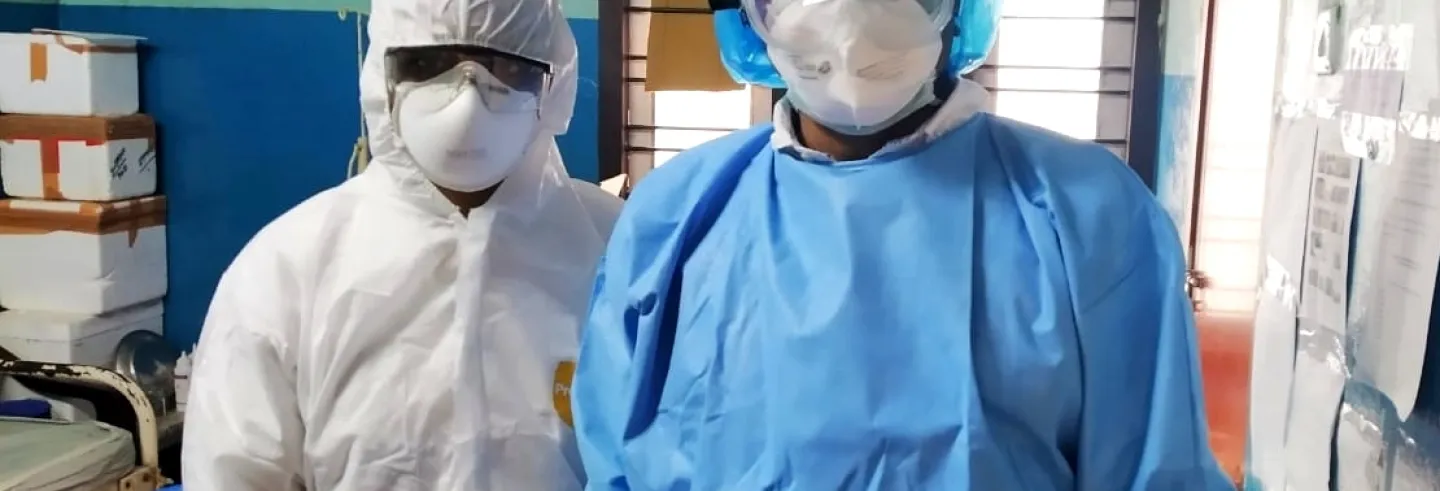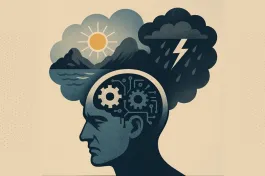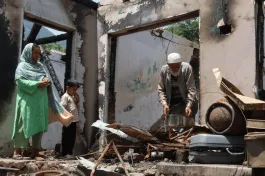On 23 January 2020, the city of Wuhan in central China imposed public health measures of a stringency the world had not seen in recent times, to stamp out the new coronavirus disease, Covid-19. Roads in and out of the city were blocked; trains and flights were cancelled. In the days that followed, as the virus continued to spread unabated, restrictions became progressively more stringent. The city’s 11 million people were more or less locked in their homes. As the ripples of infection spread wider, similar restrictions were imposed on other cities in China.
India watched this drama unfold in real-time and was given plenty of warning about how quickly the virus could spread, and the enormous impact it could have on hospitals, doctors, nurses, and health care workers. The first infection in India was detected as early as 30 January.
The initial epidemiological studies from Wuhan indicated that around 80% of those infected had mild symptoms. The real issue would be with the 20% who required hospitalisation and intensive care, of which half would require respiratory support through ventilators and other oxygenating devices. Wuhan had to construct two 1,000-bed hospitals exclusively to care for coronavirus patients from the city.
When there were warnings from January about the nature of this virus and the experience of China, how did it happen that India was forced to resort, in end-March, to a hastily thought out 21-day nationwide lockdown?
Simple modelling at the end of January or February, when the basic parameters of Covid-19 were well known, would have indicated that if the disease took hold, India would need to be ready for a wave of patients requiring intensive care. This would have required identifying beds and identifying and training personnel to deal with critically ill patients without getting infected themselves. It would have involved ensuring there were enough gloves, masks, and other protective equipment for frontline healthcare workers. It would have meant ensuring there was enough capacity in the country to test for the disease as numbers surged.
When there were warnings from January about the nature of this virus and the experience of China, how did it happen that India was forced to resort, in end-March, to a hastily thought out 21-day nationwide lockdown? Why could not the country begin preparing for a possible lockdown from earlier? Why could not the public have been taken into confidence and prepared for what was to come? Why were economic safety nets not put in place for the vulnerable?
Except in a few states, none of these early warnings appears to have been taken seriously until around the second half of March, by when six weeks if not more of valuable preparation time were lost. Thus on March 22, when case numbers were climbing sharply, Cabinet Secretary Rajeev Gauba was still urging state chief secretaries to immediately identify hospitals to be set aside for treatment of Covid-19 cases. Two days later, this was followed up by another letter to the states:
“[Y]ou will appreciate at this stage the highest priority needs to be accorded to establishing medical facilities such as hospitals, clinical labs, isolation ward and expanding and upgrading existing facilities to combat the challenge posed by COVID-19. These facilities need to be well equipped with ventilators, PPE [personal protective equipment], masks and drugs to treat the patients. There is also a need to create adequate isolation facilities to prevent further infections. The medical, paramedical and sanitation staff needs to be trained to attend the affected persons.”
These letters are remarkable both for their timing as well as the assumptions they made. In terms of timing, letters like this, asking states to start planning hospital capacity, should have gone out in early February, when it was clear the disease was spreading internationally. Once case numbers had started rising, and infected people had started popping up in most states, as they had by March, the time for planning was over. The time for action had begun.
The assumptions the Cabinet Secretary’s letter made in terms of “establishing medical facilities” were unrealistic, given the historically underfunded Indian public health infrastructure. How were “hospitals, clinical labs and isolation wards” to be established at the drop of a hat? How were these facilities to be “well equipped with ventilators, PPE, masks and drugs” when at the best of time government hospitals are chronically short of equipment?
The tragedy of workers without jobs trudging along empty highways... will be one illustration of the haste and lack of preparedness that went into the decision.
A Reuters news report cited a study by Invest India, the government’s investment promotion agency, that the country would require 3.8 crore masks, compared with the 91 lakh available at the end of March with manufacturers. With businesses locked down and supply chains disrupted, it is late in the day to only now be thinking about procuring masks and other equipment for an epidemic that is beginning to take off.
Ventilators are crucial to keep alive those whose lungs have been damaged by the virus. The Centre for Disease Dynamics, Economics and Policy at Johns Hopkins University, as reported in the Mint, estimated that India had between 30,000–50,000 ventilators available, but demand was likely to surge to around 10 lakhs by July as patient numbers rose. With a global shortage of ventilators, meeting this number could clearly be a challenge.
Similarly, the Cabinet Secretary asking that “medical, paramedical and sanitation staff be trained” to handle these patient numbers was unrealistic given the unfilled vacancies of medical staff at every level in many states.
A False Sense of Security
It will be a task for the future to reconstruct when the government woke up to the full magnitude of the epidemic that could hit the country. The Prime Minister’s “Janata Curfew” on 22 March, followed by a nationwide lockdown for 21 days from 25 March, were signs of a realisation that the epidemic was about to explode, and the only way to slow it down and buy time to prepare was through this lockdown. The economic and social cost of the lockdown will be immense, particularly on those who depend on a daily wage to feed themselves.
The extent to which the lockdown slows the speed of the epidemic remains to be seen. If we are lucky, the lockdown would have given a few more weeks of time to ward off the full fury of the epidemic. The tragedy of workers without jobs trudging along empty highways and under the scorching sun for hundreds of kilometres to try and get back to their villages will be one of the defining images of this pandemic and an illustration of the haste and lack of preparedness that went into the decision.
India has stoutly maintained that it has been on the ball from day one and was fully prepared to tackle the disease. On 28 March, the government's Press Information Bureau responded to criticism that the lockdown had been poorly planned. It described India's response from January onwards as “pre-emptive, pro-active and graded.” It also provided a timeline to demonstrate the speed with which the government introduced screening of travellers from China and elsewhere.
It is true that India responded quickly and began screening travellers from China on 18 January. This was an essential first step to take. Those bringing the virus into the country had to be isolated and prevented from spreading it further. International airports across the country began screening travellers, largely by asking them to fill in self-declaration forms. Those who said they had fever were screened and sent to hospitals. Travellers with no symptoms were only required to get in touch with health authorities if they developed symptoms.
Since airport screening was focussed on symptoms, a good proportion of infected but asymptomatic people would have got through the screening process.
This form of screening probably gave a false sense of security. Some states like Kerala took airport screening and follow-up of suspected cases seriously and started detecting travellers with the virus. Other states were more lax, and fewer cases were detected. The relatively small number of cases detected, and the large numbers of travellers screened allowed the government to say that the country had been successful in keeping the disease at bay.
But the government must also have been aware that travel restrictions were not going to keep the epidemic out of India. A modelling study in February by a team of scientists at the Indian Council of Medical Research (ICMR), that included the head of epidemiology Dr Raman Gangakhedkar, showed that even under a best-case scenario, where all travellers with symptoms were identified at airports and isolated, the restrictions would not keep the disease out of the country.
This was because a certain proportion of those infected by the virus, up to half by some estimates, are either pre-symptomatic or asymptomatic. Despite not presenting symptoms, they are capable of passing on the disease to others. Since airport screening was focussed on symptoms, a good proportion of infected but asymptomatic people would have got through the screening process.
Also, once they left the airport, the follow-up of travellers who might be carrying the disease was far from perfect. The Cabinet Secretary in a letter on March 26 to state chief secretaries pointed out that not all of the 15 lakh passengers screened at airports were followed up by state governments for surveillance. In other words, airport screening was a process that at the best of time, bought a little extra time to prepare for a full-scale explosion of disease across the country. It was not an indication that Covid-19 had been kept out of India.
Faulty Protocols
The false sense of security that airport screening provided was backed up by low reported figures of Covid-19 cases in India. These reported figures could have been low because of the testing guidelines from the ICMR. The protocols that were in place until mid March only required travellers from Covid-affected countries to be tested if they exhibited symptoms within a 14-day period of home quarantine. Those who did not develop symptoms were given an all clear.
Data from patients in Wuhan showed that 99% of infected patients would develop symptoms in 14 days, there would still be 1% who would slip through and go on to infect others. Testing could have plugged this gap. Similarly, while contacts of those who tested positive were also placed in home quarantine, they too were only tested if they exhibited symptoms within 14 days. A small percentage of infected cases might not have exhibited symptoms. Wider testing would have prevented them from spreading the virus wider.
It was only on 20 March that the guidelines were broadened to test all hospitalised patients with severe respiratory illness, as well as asymptomatic contacts of confirmed Covid-19 patients.
The ICMR’s testing protocol did not even require all suspect Covid-19 cases to be tested. The ICMR (and the WHO) definition of a suspect Covid-19 case included anyone with severe acute respiratory illness which could not be satisfactorily explained by any alternate diagnoses. Logically, these cases should have been tested to get an indication of how far the disease was spreading.
ICMR scientists who appeared at daily press briefings repeatedly defended this restrictive testing regime on the grounds that it was more than enough to detect possible cases. This was despite the evidence that countries such as Singapore and South Korea, that had widened testing, had greater success in stopping the spread than the United Kingdom and the United States, which like India did not rigorously test suspect cases.
It was only on 20 March that the guidelines were broadened to test all hospitalised patients with severe respiratory illness, as well as asymptomatic contacts of confirmed Covid-19 patients. For the first time, healthcare workers were also included if they developed symptoms. There was no explanation from ICMR on why the guidelines were expanded, after all this while being described as being more than adequate.
The logic of the 21-day lockdown is to slow the rate at which this virus transmits and buy more time... It will not stop the virus transmitting.
Reading between the lines, it was clear that there was a shortage of testing capacity, both in terms of labs that were authorised to test as well as in supplies of probes for the tests, which had to be imported. It was only in the middle of March that more laboratories in universities and research institutions as well as private testing firms were roped in. This could have been done significantly earlier. More cases might have been detected and isolated to slow the spread of the disease. More extensive testing might have meant that the current lockdown would not have been necessary.
The logic of the 21-day lockdown is to slow the rate at which this virus transmits and buy more time to prepare the health system for an influx of severely ill patients. It will not stop the virus transmitting. Wuhan went into lockdown in January. The lockdown has begun to be relaxed and businesses are just reopening. It is only now that Wuhan has stopped reporting new cases though the local Communist Party chief has warned of a possible resurgence of the disease.
In India, the numbers are still rising steadily, and different epidemiological models estimate two to three months of rising numbers before the figures begin to plateau and eventually fall. The human cost in terms of illness and death is likely to be large. India could not have avoided this epidemic. The question is whether better preparation of the health system, as well as the public at large could have helped to reduce the toll this disease will take.










